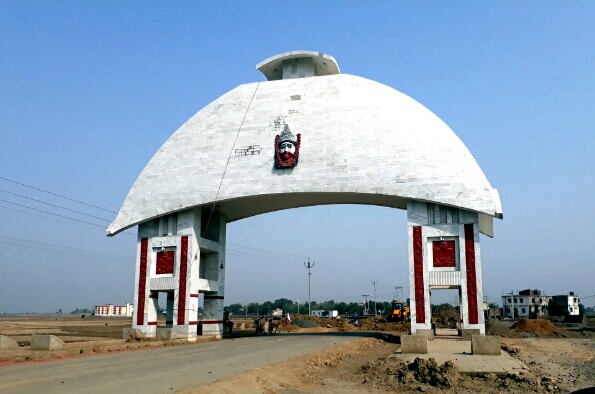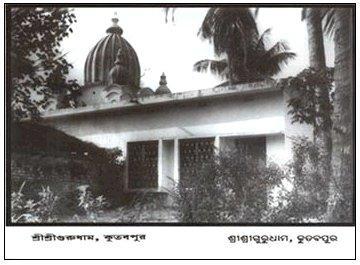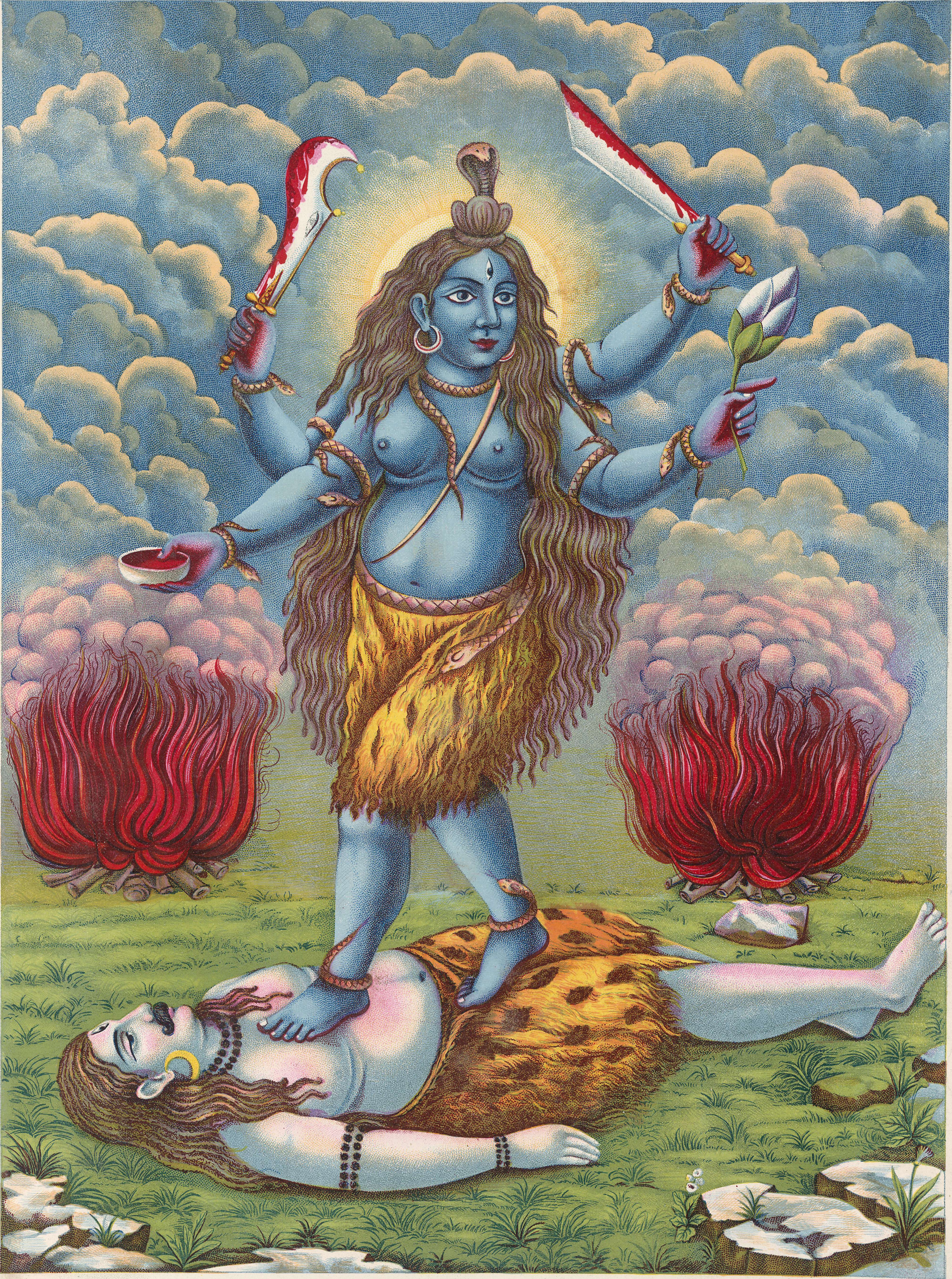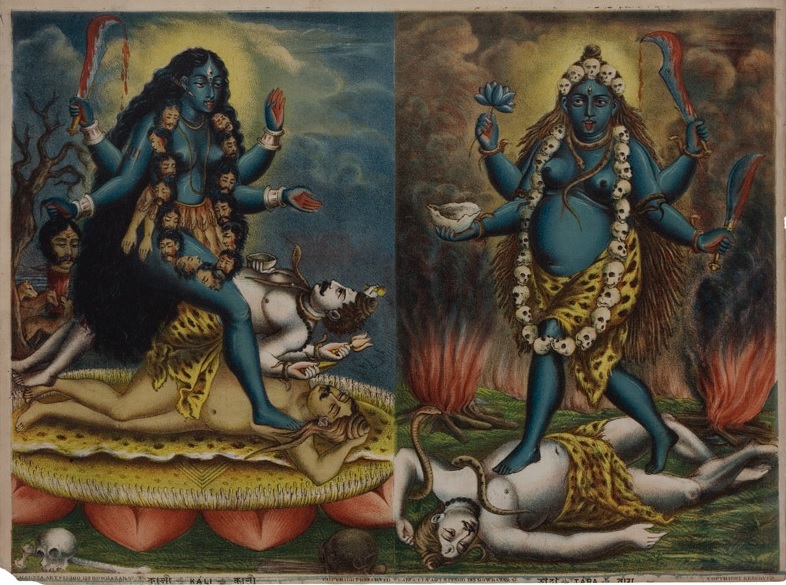|
Bamakhepa
Bamakhyapa ( bn, বামাখ্যাপা, Bamakhæpa, mad saint; 1837–1911Kinsely, p. 111), born Bamacharan Chattopadhyay, was an Indian Hindu saint who is held in great reverence in Tarapith and whose shrine is also located in the vicinity of the Tara temple in Birbhum. He worshipped Maa Tara as if she was his own mother. He was born at Atla village in Rampurhat subdivision of Birbhum district. Worship Bamakhaypa, goddess Tara's ardent devotee lived near the temple and meditated in the cremation grounds. He was a contemporary of famous Bengali saints like Ramakrishna Paramhamsa and Vishuddhanand Paramhamsa from Gyanganj or Siddhashram who established Navmundi Asan at Kashi. At a young age, he left his house and came under the tutelage of a saint named Swami Makshadananda, who lived in a village name Dakshingram, in Birbhum district. Later he relocated to maluti, an old temple village on the banks of Dwarka River. He stayed in Mouliksha temple for continuing the ... [...More Info...] [...Related Items...] OR: [Wikipedia] [Google] [Baidu] |
Tarapith
Tarapith is a 13-century Hindu temple in Chandipur village Rampurhat II CD block in Rampurhat subdivision of Birbhum district of the Indian state of West Bengal, known for its Tantric temple and its adjoining cremation (Maha Shmashan) grounds where sādhanā (tantric rituals) are performed. The Tantric Hindu temple is dedicated to the goddess Tara, a fearsome Tantric aspect of the Devi, the chief temples of Shaktism. Tarapith derives its name from its association as the most important centre of Tara worship. Tarapith is also famous for Sadhak Bamakhepa, known as the avadhuta or "mad saint", who worshipped in the temple and resided in the cremation grounds as a mendicant and practised and perfected yoga and the tantric arts under the tutelage of another famous saint, Kailashpathi Baba. Bamakhepa dedicated his entire life to the worship of Tara Maa. His ashram is also located in bank of Dwaraka river and close to the Tara temple. Geography Tarapith is a village of Sahapur G ... [...More Info...] [...Related Items...] OR: [Wikipedia] [Google] [Baidu] |
Tarapith
Tarapith is a 13-century Hindu temple in Chandipur village Rampurhat II CD block in Rampurhat subdivision of Birbhum district of the Indian state of West Bengal, known for its Tantric temple and its adjoining cremation (Maha Shmashan) grounds where sādhanā (tantric rituals) are performed. The Tantric Hindu temple is dedicated to the goddess Tara, a fearsome Tantric aspect of the Devi, the chief temples of Shaktism. Tarapith derives its name from its association as the most important centre of Tara worship. Tarapith is also famous for Sadhak Bamakhepa, known as the avadhuta or "mad saint", who worshipped in the temple and resided in the cremation grounds as a mendicant and practised and perfected yoga and the tantric arts under the tutelage of another famous saint, Kailashpathi Baba. Bamakhepa dedicated his entire life to the worship of Tara Maa. His ashram is also located in bank of Dwaraka river and close to the Tara temple. Geography Tarapith is a village of Sahapur Gra ... [...More Info...] [...Related Items...] OR: [Wikipedia] [Google] [Baidu] |
Nigamananda Paramahansa
Swami Nigamananda Paramahansa (born Nalinikanta Chattopadhyay; 18 August 1880 – 29 November 1935) was an Indian yogi, guru and mystic well known in Eastern India. He is associated with the Shakta tradition and viewed as a perfect spiritual master of vedanta, tantra, yoga and prema or bhakti. His followers idealized him as their worshipped and beloved thakura. Nigamananda was born into a Bengali Brahmin family in the hamlet of Kutabpur in Nadia district (at present Meherpur district Bangladesh). He was a sannyasi from Adi Shankar's dashanami sampradaya. After his ordination as a sannyasi, he came to be known as ''Paribrajakacharya Paramahansa Srimat Swami Nigamananda Saraswati Deva''. Nigamananda achieved siddhi (perfection) in four different sadhanas (spiritual disciplines): tantra, gyan, yoga and prema. Based on these experiences, he wrote five Bengali language books: ''Brahamcharya Sadhana'' (ब्रह्मचर्य साधन), ''Yogi Guru'' (योग ... [...More Info...] [...Related Items...] OR: [Wikipedia] [Google] [Baidu] |
Tara (Mahavidya)
In Hinduism, the goddess Tara ( sa, तारा, ) is the second of the Dasa (ten) Mahavidyas or "''Great Wisdom goddesses''", and is a form of Adishakti, the tantric manifestation of Parvati. Her most famous centre of worship is the temple and the cremation ground of Tarapith in West Bengal, India. Her three most famous forms are Ekajaṭā, Ugratara, and Nīlasarasvatī (Neelasaraswati or Neela Saraswati or Neelsaraswati). Legends and theology The commonly known origin of Tara is from the 17th chapter of the Rudrayāmala which describes the initial unsuccessful attempts of the brahminical sage Vasiṣṭha in the worship of the deity (his initial locations are usually placed by the ocean or in Kāmākhyā according to the Brahmayāmala) and the subsequent meeting of Vishnu in the form of Buddha in the region of Mahācīna and his eventual success by the means of kaula rites which employ the five makāras of Shaakta kaula tantra. She is also described as the form of the A ... [...More Info...] [...Related Items...] OR: [Wikipedia] [Google] [Baidu] |
Tara (Devi)
In Hinduism, the goddess Tara ( sa, तारा, ) is the second of the Dasa (ten) Mahavidyas or "''Great Wisdom goddesses''", and is a form of Adishakti, the tantric manifestation of Parvati. Her most famous centre of worship is the temple and the cremation ground of Tarapith in West Bengal, India. Her three most famous forms are Ekajaṭā, Ugratara, and Nīlasarasvatī (Neelasaraswati or Neela Saraswati or Neelsaraswati). Legends and theology The commonly known origin of Tara is from the 17th chapter of the Rudrayāmala which describes the initial unsuccessful attempts of the brahminical sage Vasiṣṭha in the worship of the deity (his initial locations are usually placed by the ocean or in Kāmākhyā according to the Brahmayāmala) and the subsequent meeting of Vishnu in the form of Buddha in the region of Mahācīna and his eventual success by the means of kaula rites which employ the five makāras of Shaakta kaula tantra. She is also described as the form of the A ... [...More Info...] [...Related Items...] OR: [Wikipedia] [Google] [Baidu] |
Mahapeeth Tarapeeth
''Mahapeeth Tarapeeth'' was a Bengali mythological show that was aired on Star Jalsha and is also available on Disney+ Hotstar. The show narrates the origin of Tarapith shrine- the journey from fear to faith and chart the various phases of Maa Tara and Bamakhepa’s journey to fight against societal evils. This show was produced by Max Entertainment, Surinder Films. Plot The show revolves around the manifestation of the unparalleled Tarapith, which according to legends is home to one of the 51 parts (Tara-eyeball) of Maa Sati. It depicts how the Tantric Hindu temple became the revered Shakti Peeth by regaling tales known and unknown that surround it. Set in 19th century Bengal, the show narrates the journey of the omnipotent goddess’ origin and her miracles, her connection with her ardent devotee Bamakhepa and the obstacles they overcome to abolish malpractices and superstitions in tumultuous times. Cast *Nabanita Das as Maa Tara *Dhrubojyoti Sarkar as Mahadev *Jasmine Ro ... [...More Info...] [...Related Items...] OR: [Wikipedia] [Google] [Baidu] |
List Of Hindu Gurus And Saints
This is a list of religious people in Hinduism, including gurus, sant, monks, yogis and spiritual masters. A guru is defined as a "teacher, spiritual guide, rgodman," by author David Smith. To obtain the title of guru, one must go through a standard initiation process referred to as ''diksha'', in which they receive a mantra, or sacred Sanskrit phrase. The list A to C * A.C. Bhaktivedanta Swami Prabhupada (1September 189614November 1977) * Abhinavagupta (c. 9501020) * Adi Shankara (507 BCE 475 BCE) * Advaita Acharya (1434–1539) * Agastyar (3rd millennium BCE) * Akka Mahadevi (c.1130 - 1160), Kannada literature * Alvar Saints (700–1000) * Anandamayi Ma (30April 1896 - 27 August 1982) * Anasuya Devī, also known as Jillellamudi Amma(28March 192312June 1985) * Andal (c.767), Tamil literature * Anukulchandra Chakravarty, also known as Sree Sree Thakur (born 14 September 1888) * Arunagirinathar (15th Century A.D.) * Avvaiyar (c. 1st and 2nd century AD), Tamil lit ... [...More Info...] [...Related Items...] OR: [Wikipedia] [Google] [Baidu] |
Maluti
Maluti (also Malooti) is a village in Shikaripara CD block in the Dumka subdivision of the Dumka district of Jharkhand, India. It was built under the Baj Basanta dynasty. The area has 72 old temples, which are edifices to the kings of the Pala Dynasty. They portray various scenes from Hindu mythology including the Ramayana and the Mahabharata. Maluti is known for the annual sacrifice of over 100 goats on Kali Puja, besides one buffalo and a sheep. Animal activist groups have often strongly looked down at this activity. Today Maluti is endangered by insufficient management of the old temples, and threatened by natural disasters. Geography Location Maluti is located at Note: The full screen map is interesting. All places marked on the map are linked in the full screen map and one can easily move on to another page of his/her choice. Enlarge the full screen map to see what else is there – one gets railway connections, many more road connections and so on. Demographics Accord ... [...More Info...] [...Related Items...] OR: [Wikipedia] [Google] [Baidu] |
Atla Village
Atla is a village in Rampurhat I CD Block in Rampurhat subdivision of Birbhum district, West Bengal, India. It is famous for being the birthplace Bamakhepa, a saint of India India, officially the Republic of India (Hindi: ), is a country in South Asia. It is the seventh-largest country by area, the second-most populous country, and the most populous democracy in the world. Bounded by the Indian Ocean on the so .... Education According to the 2011 census, the literacy rate of Atla village was 72.62%, with male literacy at 79.90% and female literacy at 64.71 %. Recently Atla village came into news for efforts made by Mohanananda Brahmachari Charitable Foundation community centre with help from Haven Charity, UK, to impart Information Technology skills to students."THE TELEGRAPH", 6, Prafulla Sarkar Street, Kolkata – 700 001 (ed. 1 March 2017) References {{coord, 24, 07, N, 87, 46, E, display=title, region:IN_type:city_source:GNS-enwiki Villages in Birbhum distri ... [...More Info...] [...Related Items...] OR: [Wikipedia] [Google] [Baidu] |
Hinduism
Hinduism () is an Indian religion or '' dharma'', a religious and universal order or way of life by which followers abide. As a religion, it is the world's third-largest, with over 1.2–1.35 billion followers, or 15–16% of the global population, known as Hindus. The word ''Hindu'' is an exonym, and while Hinduism has been called the oldest religion in the world, many practitioners refer to their religion as '' Sanātana Dharma'' ( sa, सनातन धर्म, lit='the Eternal Dharma'), a modern usage, which refers to the idea that its origins lie beyond human history, as revealed in the Hindu texts. Another endonym is ''Vaidika dharma'', the dharma related to the Vedas. Hinduism is a diverse system of thought marked by a range of philosophies and shared concepts, rituals, cosmological systems, pilgrimage sites, and shared textual sources that discuss theology, metaphysics, mythology, Vedic yajna, yoga, agamic rituals, and temple building, among other to ... [...More Info...] [...Related Items...] OR: [Wikipedia] [Google] [Baidu] |
Natore
Natore district is a district of Rajshahi Division located in northern Bangladesh. It borders the metropolitan city of Rajshahi, and used to be part of Rajshahi district. History Natore was the District Headquarters of Rajshahi from 1769 to 1825. Administrative Natore subdivision was established in 1825 under Rajshahi district, on the eve of the shifting of the headquarters. During the Bangladesh Liberation War in 1971, a battle was fought between the Pakistani army and the freedom fighters of Mukti Bahini on March 29. About 40 members of the Pakistan Army, Pakistani army including Major Aslam and Captain Ishaq were killed. On 5 May 1971 Pakistani Army killed 42 employees of North Bengal Sugar Mills (Lalpur Upazila, Lalpur) including the general manager of the mill, Lieutenant Anwarul Azim. They were killed near a pond in the mill campus. The pond is now known as Shaheed Sagar, and there is a memorial beside the pond. Geography Most parts of Natore district are plain land. Cha ... [...More Info...] [...Related Items...] OR: [Wikipedia] [Google] [Baidu] |







